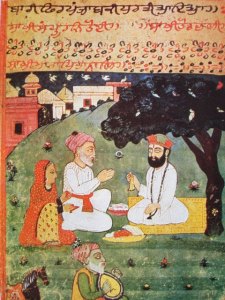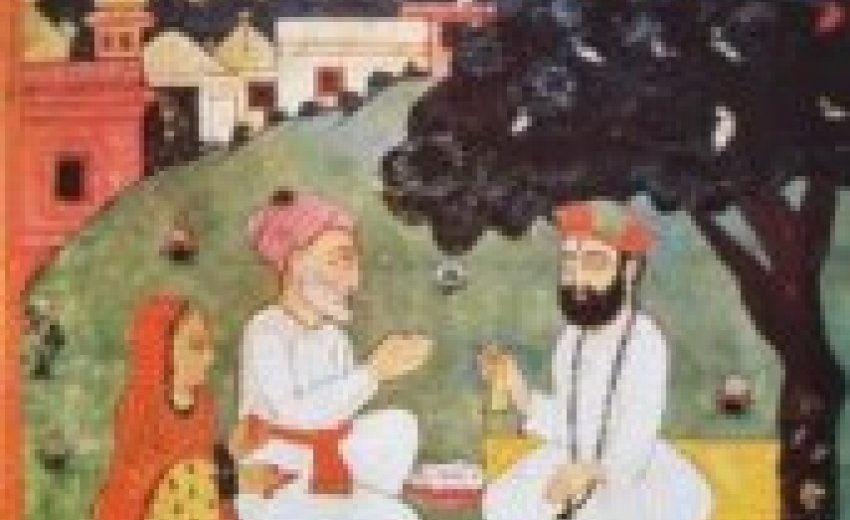 |
| Painting of Guru Nanak with his parents, c. 1733 (thanks to @simrancolumbia for the photo) |
Recently, I have been reading an early account of Britain’s annexation of the Sikh empire during the 19th century called The Sikhs and the Sikh Wars: The Rise, Conquest, and Annexation of the Punjab State. Published in 1897, British authors Sir Charles Gough and Arthur D. Innes document the history of the Sikh faith, and describe Guru Nanak, the first Guru and founder of the Sikh faith, as thus (pages 16-17):
A seeker after truth from his earliest years, he tried study, solitary meditation, travel, and intercourse with his neighbors, but failed to find either in Islam or in the current Hinduism the satisfaction which his soul desired ; but he penetrated beneath the crust of observances and conventions, and found the root of the matter in the Unity of God and the equality of men before Him. He made no attempt to formulate his religious teaching scientifically, nor did he attempt to frame a creed; but, if it is legitimate to apply an exceedingly modern terminology to what was in effect his doctrine, it might be said that he found salvation in good deeds as the fruit of a good will. He set himself to teach men the way of salvation, not as a ruler, but as a servant of God to whom the light had been shown, coming to bring not strife among men but peace.
Today, there is not enough that I can say about the individual we know as Guru Nanak — the mystic, teacher and revolutionary born in 1469 in modern day Pakistan. The multifaceted legacy that Guru Nanak has left on this world is both personal and global. Through his hymns later collected in the Guru Granth Sahib, Guru Nanak challenged each person to connect to the Divine — the one and same for all regardless of their religious tradition — within themselves, and to the same Divine amongst each other. From this fundamental connection arose the mandate of his followers — his Sikhs — to pursue equality, justice, social reform and above all, Truth.
In celebrating the birth of Guru Nanak 543 years ago, I recall an experience I shared on this blog last year, when I participated in an interfaith event to discuss such work with representatives of other faiths:
Guru Nanak traveled all over South Asia, encountering people from all kinds of traditions and practices. His message was one of unity and the connection to the Divine from within. His teachings were universal, and so much so that many Hindus, Muslims and Buddhists consider Guru Nanak as a saintly figure within their own traditions. And, in this interfaith setting that I found myself, there I was experiencing these aspects of Guru Nanak and his message, and not just reading about it.
It’s not a stretch for me to say that I felt Guru Nanak’s presence exuding in this atmosphere.
I still remember this feeling of the Guru’s presence, and it is something I will reflect on today as I commemorate another year of being his Sikh.
Best wishes to all on this Gurpurab.

